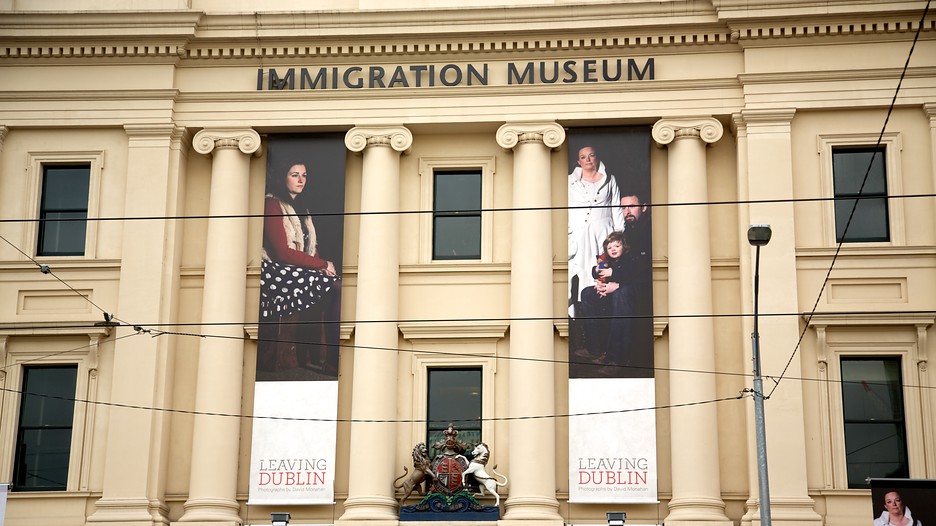Ok, let’s start with episode 2 of the Mile-High Reviews! I’ll continue with William Lane Craig’s & J.P. Moreland’s The Blackwell companion to Natural Theology. As an usual disclaimer, I’m neither a philosopher nor a theologian. It didn’t stop some of the contributors, but we’ll see that in good time.
After a first part treating Charles Taliaferro’s chapter on Natural Theology at large, let’s treat the second chapter: The Leibnizian Cosmological Argument, Alexander R. Pruss’s contribution.
A cosmological argument takes some cosmic feature of the universe – such as the existence of contingent things or the fact of motion – that calls out for an explanation and argues that this feature is to be explained in terms of the activity of a First Cause, which First Cause is God. A typical cosmological argument faces four different problems. If these problems are solved, the argument is successful.
The first problem is that although some features, such as the existence of contingent things, call for an explanation, it can be disputed whether an explanation exists. […] The second issue that must be faced in defending a cosmological argument is the Regress Problem – the problem of how to deal with an infinite regress of causes or explanations. […] The third difficulty is the Taxicab Problem, coming from Schopenhauer’s quip that in the cosmological argument, the Principle of Sufficient Reason (PSR) is like a taxicab that once used is sent away. […] The final difficulty for cosmological arguments is the Gap Problem. […] There are then three basic kinds of cosmological arguments: kalam, Thomistic, and Leibnizian. The kalam and Thomistic arguments posit an intuitively plausible Causal Principle (CP) that says that every item of some sort – for example, event, contingent being, instance of coming-into-existence, or movement – has a cause. The arguments then split depending on how they handle the Regress Problem. The kalam argument proceeds by arguing, on a priori or a posteriori grounds, that the past is finite and hence, in fact, no infinite regress occurred. The Thomistic argument, exemplified by Aquinas’ first three ways, does not rule out the possibility of an infinite past but uses a variety of methods to argue against the hypothesis that there is an infinite regress of causes with no First Cause. […] Leibnizian arguments, on the other hand, invoke a very general explanatory principle, such as the PSR, which is then applied to the cosmos or to some vast cosmic state of affairs, or else a nonlocal CP that can be applied to an infinite chain or the universe as a whole.
We start with a statement of cosmological arguments, their kinds and their problems and that’s a fair presentation I think.
Given that M. Pruss will focus on the Leibnizian kind, here’s his outline of them:
- Every contingent fact has an explanation.
- There is a contingent fact that includes all other contingent facts.
- Therefore, there is an explanation of this fact.
- This explanation must involve a necessary being.
- This necessary being is God.
Then we get to the first ground for a Leibnizian PSR: self-evidency.
We are perfectly within our epistemic rights to accept the Law of Excluded Middle (LEM), namely the claim that for all 𝑝 we have 𝑝 or not-𝑝, because of the self-evidence of LEM, without needing any further argument for it.
Not so fast. The LEM is held to be evident in everyday life — even though it very much isn’t —, but quite a few mathematicians and logicians (intuitionists mostly) refuse it: it’s not constructive. Also, even formalists admit that the principle doesn’t hold within all axiomatic systems: cf. any system of many-valued logic, like fuzzy logic.
And it is not clear on what grounds we could accept the LEM other than self-evidence. Is there some inductive argument like: “For many propositions 𝑝, we have concluded that the LEM holds. Hence, the LEM holds for all propositions 𝑝”? I doubt it.
Sigh… You accept the LEM as an axiom of your logical system. Keeping in mind that you’re right to doubt it: I mean, Gödel proved some time ago that such a proof wasn’t happening as soon as your system can encode Peano’s arithmetic.
If LEM is true, this is equivalent to equating necessity with provability. But defenders of the Leibnizian cosmological argument typically use a notion of broadly logical necessity when they claim that God is a necessary being, and broadly logical necessity is weaker than provability.
That sounds a lot like the “if God is even possible then he ought to be” games Taliaferro played.
Self-evidence might well give those of us to whom the PSR is self-evident a good reason to believe it. But if we want to convince others, we need arguments.
At least he’s aware of that…off to the second ground then: epistemology.
Thus, we cannot even say that violations of the PSR are improbable if the PSR is false. Consequently, someone who does not affirm the PSR cannot say that Koons’ skeptical scenario is objectively improbable. It may be taken to follow from this that if the PSR were false or maybe even not known a priori, we would not know any empirical truths.
Time out! In virtue of what if not every contingent fact has an explanation you can’t know empirical truths? That would become more of a pain because first you have to ascertain that your empirical fact is amongst those with an explanation, but “not every” doesn’t mean “none”. And now, get in gear for the third ground: evolution. That will be fun.
We can use this insight to generate an ad hominem argument for the PSR. Most atheists and agnostics (and many theists as well, but it is to atheists and agnostics that the argument is addressed) believe that there is a complete naturalistic evolutionary explanation of the development of the human species from a single-celled organism. I claim that they are not justified in believing this if they do not accept the PSR.
I have to say that one’s case has to be going badly to boldly claim one will go for a fallacy, right here and now. Had nothing better in store?
We might first try an inductive argument. Some features of some organisms can be given naturalistic evolutionary explanations. Therefore, all features of all organisms can be given naturalistic evolutionary explanations. […] There are at least two things wrong with this argument. The first is that it might just be that naturalistic explanations are easier to find than nonnaturalistic ones; hence, it is no surprise that we first found those explanations that are naturalistic. But even if one could get around this objection, it would not obviate the need for the PSR. For the argument, at most, gives us reason to accept the claim that those features that have explanations have naturalistic evolutionary explanations. […] A different approach would be to suppose that natural occurrences have naturalistic explanations, and evolution is the only naturalistic form of explanation of biological features that we know of; therefore, it is likely that the development of the human race has a naturalistic evolutionary explanation. But what plausibility is there in the claim that natural occurrences have naturalistic explanations if one does not accept the PSR for contingent propositions? […] We have good inductive reason to think that everything physical obeys the laws of physics. But everything that is governed by the laws of physics has a naturalistic explanation. Hence, the development of the human race has a naturalistic explanation, and an evolutionary one is the best candidate we have. […] But, intuitively, if one were not confident of something very much like the PSR, it would be hard to be justifiably confident that no biological features of the human species arose for no reason at all – say, that an ape walked into a swamp, and out walked a human, with no explanation of why.
That’s a nice go at justifying tying evolution to the PSR — Mr Pruss should beware his creationists peers though: they’ll be mad about that — but he forgot a reason which has nothing to do with acceptance of the PSR or lack there of: pragmatism. If one shows a non-naturalistically caused biological feature (and not “I don’t know what could have caused that so maybe?”, but “I know nature wasn’t behind that one”) then one has grounds to lead the search away from evolution. Otherwise, why stop using a tool which actually works? Biology lab resources are limited after all. Yes, I know it’s far from formal: we’re in ad hominem land here. Also, the first argument may avail us nothing to defeat the PSR, it can serve as basis to being pragmatic. And to the likeliness argument thinking about it: you have examples of naturalistic explanations and bupkiss in terms of non-naturalistic ones so odds are better to find yet another naturalistic explanation than anything else. And now, to the fourth ground: explanatory power.
The beginning is basically that it’s terribly difficult to judge between competing explanations without the PSR because “for no reason whatsoever” is always in play and on some criteria — namely simplicity — it’s unbeatable. Ok, it’s also beaten by pretty much everything on criteria like predictive power.
But does it make any sense to assign a probability to the hypothesis that a brick comes to exist ex nihilo in midair in front of us for no reason at all, assuming this is possible? We certainly cannot assign a probability grounded in the laws of nature to a brick’s coming into existence ex nihilo, in the way in which we can to the electron’s moving upwards in the Stern–Gerlach experiment, since the brick’s entry into existence would arguably not be governed by the laws if it happens “for no reason at all.”
So does that mean Mr Pruss admits random happenstance as a valid reason for things to happen under the PSR? That could get interesting…
For instance, if we deny the PSR, then for no reason at all, a cloud of photons, ℵ9314 in number, could suddenly appear ex nihilo just near the moon, heading for San Francisco. (Because the cardinality is so high, some of the photons would have to share the same quantum state; but photons are bosons, so they should be able to do that.) And the number of ways such things could happen seems to have no limit if the PSR fails. Or perhaps, ℵ9314 nonnatural beings could come into existence, each of which could then produce one photon.
Problem for that line of argument is, even on the rules of nature as they are currently understood and which serve as argument for the PSR hereabove, it’s possible. The probability’s vanishingly low, but virtual particles appear for no much better reason than random happenstance, interact and some of these interactions would produce photons. The probability is laughably low, but it’s already there under the PSR as currently argued.
On the other hand, if we get our probabilities a priori from some sort of principle of indifference, supposing all arrangements to be equally likely, the messy PSR-violating arrangements would seem much more probable.
Why would we get them from a principle of indifference though, as if no law of nature where applicable to that kind of events? I mean, you’re square in quantum physics’ domain here, our a priori probability calculation ought not to forget that it exists. Or the fact that the macro scale exists, thinking about it.
We need both parts for the explanation: without the PSR, the possibility of this happening for no reason at all would be impossible to rule out, and without the claim that existing beings are unlikely to cause it, the PSR would be insufficient (this suggests that if the cosmological argument can establish the existence of a First Cause, there is reason to think that the First Cause has a predilection for order, a fact relevant to the Gap Problem) […] It may seem that I am caught in a vicious circularity here.
I don’t think so. Mr Pruss might be caught in not working “independent any divine revelation or scripture” though: he’s predefining some properties of his gods in order for the PSR to be able to help him out proving them. Also, his gods may very well be tricksters: that predilection for order, if there’s one at all, only exists at macro-scale. For land’s sake, quantum physics exists and is a good way to describe micro-scale phenomena. And it’s a bit lasciate ogni ordine, voi ch’intrate.
One might think that some physical law, say, a conservation law, would do the explanatory work here, a principle other than the PSR. But the logical possibility of miracles shows that it should be possible for a supernatural being to cause photon clouds to show up ex nihilo, and if the PSR is false, such supernatural beings could be coming into existence all the time, causing the weird effects. Our best explanation for why this is not happening is that there is nothing in existence that would be likely to cause such supernatural beings to come into existence, and by the PSR they cannot come into existence uncaused.
That’s only an a priori probability though. Also, importantly, it assumes that the supernatural exists which is once again not working “independent any divine revelation or scripture”. If he wants to use miracles in his argument, I guess he needs to either show supernatural events first or admit he’s writing AU fanfic. Now on to the next argument: alethic modality, aka truth in the world as opposed to in someone’s judgement (that would be epistemic modality).
Why is it necessary that 2 + 2 = 4
Mr Pruss ought to chose his examples better: it’s not. (Yes, I did theoretical CS, aka college-level maths. Yes, we are pains in the neck about that. Yes, these things appear in practice: what does an int represents in a given programming language.)
And now, the modality accounts according to Pruss, starting with the narrowly logical one:
In a number of other early modern thinkers, we have the following “narrowly logical” account of modality, probably best developed in Leibniz. A proposition 𝑝 is necessary if and only if a contradiction can be proved from its negation. Assuming classical logic, as these thinkers did, it follows that necessity is equivalent to provability. And a proposition is possible if and only if no contradiction can be proved from it. […] Our last example has shown the general problem with narrowly logical accounts of modality: the grounding burden simply shifts to the question of the choice of the axioms and/or rules of inference and that question we cannot answer with the resources of the view in question.
Hm, so the issue is that narrowly logical modality is descriptive and not prescriptive? I mean ok, fair enough, but a paradigm based on the LEM was always going to have to reach for “add that to the axioms”. It would be interesting to see non-classical logics applied to that account of modality though.
Next us is the Lewisian account:
The Lewisian account, also known as Extreme Modal Realism (EMR), says that a proposition is possible if and only if it holds in some possible world, and necessary if and only if it holds in all possible worlds. This is only going to be of help if we have an independent account of possible worlds, and indeed EMR supplies one. A possible world is a maximal spatiotemporally interconnected aggregate of things. (We can also stipulate that abstract entities count as existing in every world.) We live in one of these worlds, the actual world, and there are infinitely many others. Every way that things could have been is a way that things are in some world. We then make a distinction between existence and actuality. Something exists provided it exists in some world or other. Something is actual provided it exists in the actual world. EMR has a number of problematic consequences. For instance, if EMR holds, consequentialistic moral reasoning breaks down completely because no matter what I do, the overall consequences in reality are the same, since reality always already contains all possible worlds.[…] Lewis, however, thinks that what matters ethically is not just the consequences but that I have produced them (Lewis 1986, p. 127). I cannot affect what happens in other worlds, but I can be the cause of goods in our world. Of course, this makes no difference in the space of all possible worlds – in infinitely many of them, people very much like me are causes of goods and in infinitely many of them, people very much like me are not causes of goods, and the distribution of worlds is not affected by my action. But my relationship to the goods is affected. However, this unacceptably reduces the moral weight of consequences. […] On Lewis’s view, however, my reason to help strangers is only the agent-centered reason to be the cause of goods because the consequences are always the same. But since the agent-centered reason to be the cause of goods has extremely low weight, it follows that EMR radically lowers the weight of reasons to help strangers. If we accept a more traditional assessment of the weight of these reasons, we shall have to reject EMR.
I see an argument to consequences here…two problems though: if the quantum many-worlds interpretation turns out to be true, the universe at large is pretty much like the one described by Lewis, so like it or not we’d have to deal with it. And second point, his personal morality pokes out here: he’s trying to derive an is form an ought here. (As an aside, of course one has reason to help out complete strangers in a utterly agent-centred, “empathy, what’s that?” view of morality: we’re social animals. One’s reason is PR)
Third follows the Platonic account (i.e. truth of propositions exist as ideal Platonic entities):
Note that the theoretical reason for believing in these Platonic propositions is largely independent of issues of modality. Adams then constructs a possible world as a maximal consistent collection of propositions. (An argument is needed that such collections exist, but let that pass.) Exactly one world is then absolutely actual: it is the one all of whose propositions are true. A proposition can be said to be true at a world, providing it is one of the propositions that are members of the collection of propositions that the world is identical with. Note that because the worlds are Platonic entities, I had to distinguish between the concrete universe, which we physically inhabit, and the actual world, which is the collection of all true propositions.
Platonic universes…joy. And yep, it’s Plantiga behind that one.
What is it that picks out one relation in the Platonic heaven rather than another as the relation of representation? […] The proponents of these Platonic worlds can argue, however, that they have no need to answer this question. The relation of representation is one of the primitive terms in their theory, and it is not a primitive chosen ad hoc to explain possible worlds but a primitive needed for other explanatory purposes, such as for making sense of our practices of claiming, believing, and paraphrasing.
Ok, they’re formalists like whoa.
But while a complete reduction is probably impossible, it could be desirable to give at least a partial reduction, on which the whole realm of alethic possibility would be seen to have its root in some more comprehensible subclass […] However, in a deeper way, the Platonic approach is not faithful to what the Aristotelian maxim affirms. When Aristotelians say that a possibility is grounded in an actuality, they mean that actuality includes some powers, capacities, or dispositions capable of producing that possibility, which of course once produced would no longer be a mere possibility.
That part on the Platonic account brings two things to my mind: first, Mr Pruss seems to be an Aristotelian. Second, he seems to love himself some is-ought problems: “That argument ain’t good because its consequences go against my morality. This one doesn’t work because it’s too arcane to my tastes. And this one? It doesn’t follow Aristotle!”
Fourth up is the Aristotelian-essentialist: essences define things and propositions are true if they don’t go against the essences of things.
But “derived” surely means “logically derived.” And so it turns out that the Aristotelian-essentialist needs elements of the narrowly logical view. Once again, the same question comes up: what grounds the choice of axioms or rules of inference? However, the Aristotelian is better off here than the proponent of just the narrowly logical view because the truths contained in the essences of things provide a rich set of nonarbitrary axioms.
For the Aristotelian-essentialist view — which Mr Pruss implies need a god of some stripe — that’s not much of a problem I think: in that adventure, one has to take some rules of logic as axiomatic, otherwise one falls in the stoic trap of not being able to state anything. Sometimes “because it works” is as good an answer as any. (And yes, I know it’s not exactly principled. But eh, Mr Pruss is slamming the Lewisian account because it offends his sensibilities.)
The problem, thus, is with what constrains what essences there could be. One answer, inspired by the static character of Aristotle’s universe, would be that all the essences that can exist in fact do exist, or at least existed, exist, or will exist. However, a crucial difficulty remains as to what “can” could mean here. What constrains which essences can exist?
Some of these problems can be solved by going a theistic route. Perhaps there is a God whose essence encodes necessary truths not just about himself but about others, such as that there can be no square circles, and that certain weird essences cannot exist.
That awfully limits one’s choices though: in that case, whose to say that there isn’t gods whose essences, taken together, serve as gatekeepers? Because it doesn’t help one’s cause? Sorry, once all bets are off, all bets are off. (And that’s violation of Natural Theology’s conceit № too-many-to-count)
Suppose now that none of the essences that are exemplified in our world is necessarily exemplified. We should then be able to describe a world full of really, really weird things – beings with essences that make their kinds be defined by the number of hairs, self-caused beings, and the like – as long as we do not transgress narrowly logical norms and as long as we take care to include none of the beings of our world. And such a world will be possible since the essences that exist in our world will be irrelevant to what goes on in that world as our world’s essences will be unexemplified there. Likewise, a completely empty world would be possible then – a world with no essences exemplified. In that world, it will be true that everything that is narrowly logically possible is metaphysically possible, since there will be no constraining essences at all. In particular, in that world it will be possible that Gödelian claims of arithmetic that are true at our world are false. And, of course, it would then be the case that S5 is false, but the Aristotelian-essentialist may not mind that consequence.
If we think that the space of all possible worlds is not such a slum as to include all such worlds, we have to think that at least one of the beings that exist in our world is such that its essence is necessarily exemplified, and that the essences of the necessary beings place constraints on what sorts of essences there can be, what sorts of arithmetical truths there can be, and so on.
Madre de Dio, Mr Pruss loves himself that is-ought problem! Why should the space of all worlds be so limited? Because Mr Pruss’s imagination conjured up something he didn’t like? He used “possibility” as an escape hatch earlier, so can the Aristotelian-essentialists who don’t want to reach for gods: it cuts both ways.
But it is still not clear why something could not have the power to act contrary to its essence.
By definition of an essence? I mean, earlier in the text:
Things that exist have essences. These essences, on this account, constrain what properties these things can have.
That is, they exemplify what a thing can and can’t do.
Last is the Aristotelian-causal version, which Mr Pruss is evidently holding: I mean he made no attempt to take it down whereas he spent a few pages going after the other four.
And now, some philosophical argumentation:
It is morally acceptable to redirect a speeding trolley from a track on which there are five people onto a track with only one person. On the other hand, it is not right to shoot one innocent person to save five.
I would guess that the is-ought problem strikes again here: morality is rather subjective. I’d bet one can find people stating that either both are bad (one’s murdering someone who asked nothing in both cases) or both are good (one saved five people through one murder — and so come up at +4 — in both cases).
Almost all moral theorists accept the supervenience of the moral on the nonmoral. But without the PSR, would we really have reason to accept that?
Depending on one’s definition of morality? Sure: on utilitarian morality they do what is moral because it helps the group and, because no man is an island, themselves as well by the way. I’ve seen that Mr Pruss prefers the rarefied air of the ivory tower but, at the end of the day, morality is for the real world or is useless.
Justification via the sense of deity
Ok, that part is not natural theology as defined in chapter 1 in the slightest. Because “I need to believe in God to accept the argument I use to prove God” is as much use as a chocolate teapot. And the “but that’s still useful because Calvin” afterwards is definitely not working independently of a divine revelation or scripture: Mr Pruss even cites Romans for land’s sake!
And now, the PSR’s putative defeaters. And well, the presentation Mr Pruss choose to use is rather weaksauce for the first one, modal imagination…
One can, arguably, imagine that a brick pops into existence uncaused. Therefore, one might conclude that it is possible that a brick pops into existence uncaused, and hence that the PSR is not a necessary truth. This is a popular Humean argument against the PSR.
It is, because it’s worse for defenders of the PSR that what his presentation implies: we know of things appearing for shit and giggles. They’re not big — indeed, they’re as micro-scale as can be — but they don’t need to to be defeaters. So I fear the whole “but did you really imagine that uncaused brick?” dance he indulges on is not overly useful: one doesn’t need to imagine uncaused things to use them in arguments.
Now, on to the second one: modal fatalism. Here’s Mr Pruss’s presentation of it:
- No necessary proposition explains a contingent proposition. (Premise)
- No contingent proposition explains itself. (Premise)
- If a proposition explains a conjunction, it explains every conjunct. (Premise)
- A proposition 𝑞 only explains a proposition 𝑝 if 𝑞 is true. (Premise)
- There is a Big Conjunctive Contingent Fact (BCCF), which is the conjunction of all true contingent propositions, perhaps with logical redundancies removed, and the BCCF is contingent. (Premise)
- Suppose the PSR holds. (for reductio)
- Then, the BCCF has an explanation, 𝑞. (by (15) and (16))
- The proposition 𝑞 is not necessary. (by (11) and (15) and as the conjunction of true contingent propositions is contingent)
- Therefore, 𝑞 is a contingent true proposition. (by (14) and (18))
- Thus, 𝑞 is a conjunct in the BCCF. (by (15) and (19))
- Thus, 𝑞 explains itself. (by (13), (15), (17), and (19))
- But 𝑞 does not explain itself. (by (12) and (19))
- Thus, 𝑞 does and does not explain itself, which is absurd. Hence, the PSR is false.
And now, he’ll go after van Inwagen’s modal fatalism argument by doing something I’d say is risky: checking the truth of the arguments’ premises. I mean, we could be tempted to do the same to his.
But we should not accept (11). We shall see that the main reason for believing (11) rests on a misunderstanding of how explanation works. Moreover, I shall argue that someone who accepts the logical possibility of libertarian free will should deny at least one of (11) and (12).
Before going further — and without dealing with the truth status of libertarian free will —, I have to note that it means someone holding to libertarian free will could reject both the modal fatalist argument and the PSR’s justifications: they’d just have to reject (12) instead of (11). I mean, Mr Pruss uses (12) to go after narrowly logical accounts of modality:
Third, it is impossible for anything to cause itself. […] But how would we go about proving this?
and, more importantly, in his Leibnizian cosmological argument’s outline (part of how to go from (3) to (4)).
So now, his explanation of why should one reject (11), with first an outline:
- If it is possible for 𝑞 to be true with 𝑝 false, then 𝑞 does not explain 𝑝. (Premise)
- If 𝑞 is necessary and 𝑝 is contingent, then it is possible for 𝑞 to be true with 𝑝 false. (a theorem in any plausible modal logic)
- Therefore, if 𝑞 is necessary and 𝑝 is contingent, then 𝑞 does not explain 𝑝.
With (27) being “If 𝑞 explains 𝑝, then 𝑞 entails 𝑝.”, (24)’s contrapositive.
Let me start with a quick ad hominem argument against (27). It seems a perfectly good explanation of why the dog did not bark that neither a stranger came by the dog nor did any other potential cause of the dog’s barking occur. But the explanans here only entails the explanandum if we suppose that it is a necessary truth that if the dog barked, its barking
had a cause. But opponents of the PSR are unlikely to grant that this is a necessary truth, unless they have some principled to reason to argue that dogs’ barkings metaphysically require causes, but some other things do not need any explanation, whether causal or not. But I doubt that there is a good way of drawing the line between barkings and other states of affairs.
Again?!? Damn, now I know where Lydia McGrew’s love of fallacies of the argumentum ad kind comes from…
Perhaps we can build that proviso into the explanation. Why do the planets move in approximately elliptical orbits? Because the main gravitational influence is that of an approximate point mass, and there are no other relevant influences. But the word “relevant” is crucial here, for, of course, there are many other influences, such as electromagnetic ones. The word “relevant” here seems to mean “relevant to affecting the approximate shape of the planets’ orbits.” But that is not quite right. Electromagnetic influences of the sort that the planets undergo are, in general, relevant to affecting the approximate shape of the planets’ orbits. They are just not relevant in this case because the gravitational influence of the sun swamps the other effects.
While the first defeater against (27) — that in statistic explanations the explanans do not entail the explandum per se but just makes it more likely — wasn’t all that bad, that one for non-statistical explanation is weak: it’s pretty much an injunction to be clear in one’s language (not cited) coupled with a failure of imagination when trying to build a correct proviso…and a correct explanation for the purpose, thinking about it: “Because the sum of the forces applied on the planets adds up to an approximate point mass” works just as well and has no problems with electromagnetic forces being swamped by the Sun and not explicated or anything: they’re in the summation.
Actually, the objector to the PSR should not say so. For if the PSR is false, then surely things can come into existence for no reason at all and can likewise pop out of existence for no reason at all. Thus, it is quite possible for all of the aforementioned to be true, and yet for the planets to pop out of existence, thereby preventing them from having any orbits at all.
Actually, the work is cut out in both ways: the opposite of “∀𝑥, 𝑝(𝑥)” isn’t “∀𝑥, ¬𝑝(𝑥)”. It’s “∃𝑥, ¬𝑝(𝑥)”. So, absent other data, neither side of the discussion know it is in fact possible: the planets could be in the set of entities to which causation applies. As for the counter that the loading up of provisos in the explanation is unfair even present the PSR given that one of the provisos gives the explanation by itself, not my fault Mr Pruss didn’t see the Σ in the second law of motion and so needs some. (Yes, that can be construed as an ad hominem. You noticed we were back in ad hominem country right?)
The punt for quantum mechanics-based objections is funny though:
The PSR does not say that for every contingent proposition there is the best possible kind of explanation, but just that there is an explanation, “an ‘explanation enough’” in Haldane’s words.
Damn if that doesn’t look like a punt to logical possibility…
Now, for his defence of causal principles and how to go from a local one to a non-local one:
Thus, a local CP about contingent substances holds that every substance has a cause.
I don’t know about that one…it would of course depend on the definitions of cause and substance used, but wouldn’t virtual particles fit the bill for a counterexample? If so, that paragraph about non-local CPs being derivable from local ones absent ad hoc restrictions is nice but falls at the first hurdle: actually establishing a local CP.
Next is the modal argument for a CP, which doesn’t look too bad at the beginning, but:
I shall now argue that if 𝐸 is a state of affairs that can have a cause, then 𝐸 is a state of affairs that does have a cause.
That does seem, granted given some odd assumptions like e.g. libertarian free will along with the randomness objection being true, to imply random blips to be a valid cause for that argument. On another tack, if virtual particles and the like don’t have causes as understood here, Mr Pruss is writing the setting for an AU: that’s already false of our world (consider virtual photons like those involved in the Casimir effects and their real counterparts like those created by particle-antiparticle annihilation).
Back to the PSR, we get an almost impressive piece of sleight of hand:
This argument has an interesting consequence. I have argued (Pruss 2004a) that if we reject the PSR because we think that it has some counterexamples, such as the BCCF according to the van Inwagen argument, we should instead accept the restricted PSR (R-PSR):
(R-PSR) Every proposition that possibly has an explanation actually has an explanation.
Now, since the R-PSR claims to be a metaphysical principle, we should take it to be a necessary truth.
Behold!
Next, we get the argument once we have a PSR and, if I’m not mistaken, here:
But given a set of contingent entities, these entities can neither collectively nor individually causally explain their own existence. Nothing can be a cause of itself, pace Descartes. The existence of a cause is explanatorily prior to the existence of the effect, but nothing can be explanatorily prior to itself.
Mr Pruss commits a fallacy of composition: even if everything in the universe were contingent, it doesn’t have to be.
Next if going through some objections, starting with trying to get a basic principle to ground that use of the PSR (so as to avoid the Taxicab problem):
The idea is to explain the BCCF in terms of the Principle of Optimality: of metaphysical necessity, the best narrowly logically possible world is actual. However, Rescher’s suggestion is one that the defender of the cosmological argument need not worry about too much, since it is plausible that the best narrowly logically possible world is a world that contains God, considered as a maximally great being. Rescher himself thinks this. And so, in any case, we get the existence of God, albeit in a somewhat more roundabout way.
A problem though is that the PSR only gives you creator gods, with no other characteristics (ok, it’s eternal, outside the world and a few other not helping all that much things). The most narrowly tailored divinity to what one gets is the deists’ god, not the Christians’.
Next objection, to constructing the BCCF, is that some conjunctions don’t make sense even though its conjuncts do.
This argument is a challenge: if some conjunctions do not make sense, how do we know that the BCCF makes sense? One way to meet the challenge is to try to shift the burden of proof. A conjunction of propositions should be assumed to make sense unless it is proved not to.
Hell no! That’s Mr Pruss’s argument, it’s his cross to bear! Besides, with that non-constructive an argument how one’s to know he’s not fanficing again in building his BCCF? Or going for an inductive construction without base case? Then he tries to rewrite that as the BCCF*, which is…hardly more constructive. And tops that with…an appeal to æsthetics? See for yourselves:
It is highly plausible that that there are contingent beings is itself a contingent proposition. For if it were a necessary proposition that there are contingent beings, then we would have odd necessary truths such as that, necessarily, if there are no contingent nonunicorns, then there are contingent unicorns.
Next is the Hume–Edwards Principle (i.e. explain all conjuncts and you explained the conjunction).
The first objection to HEP is that it does not take into account the fact that there can be more to explaining the conjunction than explaining the conjuncts. If there were a hundred Inuit on a street corner in New York, individual explanations of each one’s presence would miss the point of explaining why there are a hundred Inuit all there. There is a coincidence to be explained.
Apart for random happenstance being an explanation for, you know, coincidences, wouldn’t the individual Inuit answers to the question give the group’s reason if there were one to be found?
Also, further in this chapter:
Quentin Smith has argued that the universe can cause itself to exist, either via an infinite regress or a circle of causes. However, while he has claimed that such a causal claim would provide an answer to the question “why does the universe exist?” (Smith 1999, p. 136), he appears to have provided no compelling argument for that conclusion.
That seems right, but given that earlier in the text Mr Pruss had punted to “broadly logical necessity” and hypothesises being “an ‘explanation enough’”, he can hardly complain when others use similar dodges.
Next is a treatment of the objection that causally efficacious necessary beings — or causally efficacious non-spatiotemporal ones for that matter — don’t exist.
If we agree with Newton against Leibniz that action at a distance is at least a metaphysical possibility, although present physics may not support it as an actuality, the pressure to see spatiality or even spatiotemporality as such as essential to causality is apt to dissipate – the restriction requiring spatiotemporal relatedness between causal relata is just as unwarranted as the restriction requiring physical contact.
The problem though being that if present physics are right in requiring temporal precedence, Mr Pruss is AU fanficing here: a god may well have created an universe like he describes, and that god may well be Christianity’s, but that universe so created ain’t ours.
Admittedly, a Humean account of causation on which causation is nothing but constant conjunction only works for things in time, since the Humean distinguishes the cause from the effect by temporal priority. But unless we are dogmatically beholden to this Humean account, to an extent that makes us dogmatically a priori deny the existence of deities and other nonspatiotemporal causally efficacious beings, this should not worry us.
I find rich of him to complain that Humean philosophers seeing causation in terms of their paradigm makes them dogmatics when one of his complaints towards the Platonic account of modality is that it doesn’t see actuality in Aristotelian ones.
One answer was already alluded to: some will insist that only spatiotemporal entities can be causally efficacious and it is implausible that a necessary being be spatiotemporal. But it was difficult to see why exactly spatiotemporality is required for causal connections.
Sheer pragmatism I’d guess? I mean, as Mr Pruss admits, current physics don’t admit any other form of causation. And science currently reign supreme as tool to understand the world — in no small part because it, by and large, works — so changing the allowable forms of causation re. our universe would have to show where physics currently fails, explain what the current understanding doesn’t, how could we falsify it et cætera.
But, likewise, it could be that the true system of ontology entails the existence of God. Another option for the defender of the epistemic possibility of a necessarily existing deity is provided by the ontological argument. […] It could, thus, be that in fact God exists necessarily in virtue of an ontological argument that is beyond our ken, or perhaps the non-question-begging justification of whose premises is beyond our ken, while we know that he necessarily exists by means of a cosmological argument within our ken. We do not, after all, at present have any good in principle objection to the possibility that a sound ontological argument might one day be found.
I know I did it a few times, but “one day you’ll see! we might be vindicated!” isn’t exactly convincing. Above all when one dismisses objections as “not presenting convincing arguments”.
Then, after a few variants on the ways to pas a PSR through, the Gap problem (i.e. how to go from a First Cause to a given god or gods). And we see straight away the rather closed circuit these philosophers work in:
The typical philosopher who accepts a necessarily existing First Cause is also a theist. Thus, there is not much of an audience for arguments that the necessarily existing First Cause is God.
Even without getting out of the Old World, one has Jewish, Muslim, animists and neo-pagan philosophers as an audience. And even if one tries to go the way that most of those are not credible philosophers but amateurs, so is one of the contributors of this very book. But that’s for another day…first up: agency
In contingent reality we find substances, and the existence of a substance is not conceptually explained by the activity of something other than that substance – substances are self-standing. At worst, the existence of a substance is conceptually explained by the existence of constituent parts, but if so, then these constituent parts will themselves be substantial. In the end we shall have to give a nonconceptual explanation, or else to find parts that are necessary. But it is false that goats and people are made up of necessarily existing parts.
Although if concepts like the quantum foam end up being structural features of any space-time, that might be the necessary substance right there.
Perhaps only agential explanations in terms of a necessary being combine the two crucial features: contingency of effect and the impossibility of asking for a further explanation of some further contingent fact. However, if one thinks that nonagential statistical explanations can also have this feature, then this argument will not impress.
If one admits randomness in the possible causes of something, then yes, stochastic phenomena also have that property.
The First Cause is an entity that has produced a universe apparently fine-tuned for life, containing beauty and creatures attuned to beauty, containing moral obligations and creatures aware of them; a universe containing conscious beings with free will; and a universe some of whose contents have objective functions (eyes are for seeing and so on – these kinds of functional attributions arguably cannot be reduced to evolutionary claims, although there is a large literature on this controversial claim).
That’s…more than a bit hasty: a ridiculously high proportion of the universe is actively hostile to life, so it’s hardly fine-tuned for it. I see beauty and morality as respectively subjective and intersubjective so these points are arguable and the last one is the Irreducible Complexity argument, which is yet to find a valid example for its claims given how life repurposes everything.
We have shown, let us suppose, that there is a First Cause. The further supposition that the First Cause is a highly intelligent and very powerful person acting purposively is highly plausible given all this data.
Although, given some parts like the very sketchy fine-tuning, if a personal First Cause there is, I’d say it’s most likely a trickster. That would make, say, Hinduism or Nordic Paganism vastly more plausible than Christianity.
We might see evil as ontologically inferior to the good. […] Seen from that point of view, evil can never be seen to be the victor. […] Evil can only mock the good but can never win.
First, but that’s par for the course in arguments from goodness, that’s the is-ought problem on steroids here. Second, it’s also wrong: nihilistic evil, which doesn’t aim to suffering but to utter destruction can win even on such a view.
Behind the twisting of human nature in a serial killer, there is the good of human nature – if it were not good, and if it were not in some way metaphysically superior to the evil so as to provide a standard against which that evil is to be measured, then the twisting would not be an evil.
Oh, we could see it as an evil even if, metaphysically, the best position were neutrality and both good and evil were to be seen as inferior as being deviations from balance. If is good what is, by and large, useful to society and by dint of us being social to individuals, a serial killer’s rampage is evil as being not even useless but damageable to society.
So by creating, the First Cause makes more good than evil come into existence, and if the First Cause is evil, then to do that is, well, stupid. But the fine-tuning of the universe suggests that the First Cause is highly intelligent.
Not so fast! Now, for a twist, let’s say the First Cause is an evil interested in suffering. So, by creating life, it increases the kind of evil it’s interested in by the sheer fact that to live is to suffer. That some good is created on the way is a by-product on this view.
Emergentist theories of mind are predicated precisely on a rejection of this axiom, but it will not do to use them as counterexamples to the axiom, since emergentism is controversial precisely because it allows for nonphysical properties to arise from physical ones in contravention of our axiom. […] Accounts that do not allow such reduction make the arising mysterious, and our being mystified here is a testimony to the plausibility of the axiom.
Rejecting a possible explanation just because it goes against what you want to prove is as annoying when Mr Pruss does it than when the Insane Clown Posse does. Also, choosing an account which doesn’t allow for a given thing to happen and being all aflutter when said thing happens hardly makes for a good argument.
If we do accept this argument for the First Cause’s having all the perfections of created things, we can proceed to argue further as follows […] Consequently, the First Cause not only has all the perfections of the things that exist in our world but also all the perfections of the things that exist in any possible world.
Wait… isn’t that in part the ontological argument? As in, “God must be the biggest, most impressive of all”? If so, I guess he was dead before Creation: it would be mightily impressive of something to manage to create anything while not being (I kid, I kid). More seriously, Mr Pruss loves himself some “if you’ll just accept my premises” it seems.
At the same time, the aggregation move that we had made raises the possibility that the First Cause is a polytheistic committee, having all perfections collectively but with no one deity having them all individually. If Aquinas is right that in any First Cause there must be identity between the thing and its existence, and that having all perfections follows from this identity, then the worry does not arise. If this is not a satisfactory solution, we may need to employ some other argument for the unity of the First Cause, such as that if there were multiple necessary beings, we would not expect to see a nomically unified world.
I’d say that all depends on exactly what it means for all parts of the world to run on the same laws: for example, there are many different clocks running in the universe. For a possibly more worrying one, space becomes time-like and vice versa inside black holes.
The second difficulty is that on this argument, the creator’s causal activity explains all contingent activity, including, presumably, any free choices by creatures. This problem infects other Leibnizian cosmological arguments. Probably, the way to handle it is to give a subtler and more careful definition of what it is to be a creator in 𝑤. Maybe the First Cause’s activity does not have to explain all free choices made by everybody; it may simply have to explain both the prerequisites for all free choices made by any contingent beings, and everything that does not depend on the free choices of contingent beings? This is probably all we need for the crucial uniqueness argument.
The problem is more for the theodicies though: unless you go the Divine Command Theory way, that does mean that evil exists at the First Cause’s leisure. Ok, it also does in the Divine Command Theory case, but it gets redefined as good because God’s morality is alien†.
Next up will be WLC for another cosmological argument, the Kalam one this time…that will be for May.
†: ⚠ TVTropes link.




















